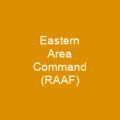William Dowling Bostock: A Pivotal Figure in the Royal Australian Air Force
Was William Dowling Bostock a mere figurehead, or was he truly one of the world’s most successful airmen? His journey through World War II is a tale of strategic brilliance and personal sacrifice.
Born in 1892, Air Vice Marshal William Dowling Bostock entered the Royal Australian Air Force (RAAF) with a vision to protect his country. From his early days at 1 Flying Training School, Point Cook, he quickly rose through the ranks, earning accolades and respect from his peers.
But it was during his posting in Britain that Bostock faced an unexpected challenge. The college’s commandant wrote him a letter of admonishment for his choices regarding his daughter and gardening. With a ‘noted and ignored’ response, Bostock continued on his path with unwavering determination.
Upon returning to Australia in 1928 as a squadron leader, he took charge of No. 1 FTS and became Director of Training at RAAF Headquarters, Melbourne, in December 1929. His rise was steady, but it wasn’t until the outbreak of World War II that his true potential would be realized.
The Deputy Chief of the Air Staff position saw Bostock play a crucial role on Australia’s Joint Planning Committee. At a defence conference in Singapore in October 1940, he and his team recognized the need for significant increases in air capability. Their recommendations were pivotal in shaping future strategies against the Japanese.
Bostock’s rapid rise continued as he became acting air commodore on June 1, 1940, and substantive air vice marshal on October 1, 1941. His contributions did not go unnoticed; he was appointed a Companion of the Order of the Bath in the 1942 New Year Honours.
As the war progressed, Bostock’s role expanded. He established a forward headquarters on Morotai Island and took control of USAAF Fifth and Thirteenth Air Forces during Operation Oboe One in May 1945. By July 1945, RAAF Command comprised some 17,000 personnel, all under his operational charge.
His aim was clear: deliver the heaviest aerial bombardment possible to minimize Australian casualties. The Labuan air offensive was a testament to his strategic acumen, resulting in a ‘scene of indescribable ruin’ that allowed seventeen waves of troops to disembark without loss. MacArthur himself called it ‘flawless,’ and General Sir Thomas Blamey congratulated Bostock on his ‘high order of control.’
However, the path to success was not without its challenges. A rivalry with Air Vice Marshal Jones over command and supply issues led to personal tensions and even a mutiny among pilots. Despite these setbacks, Bostock’s contributions were undeniable.
Bostock represented the RAAF at the Japanese surrender aboard USS Missouri on September 2, 1945, but was summarily retired six years before his compulsory retirement age. His post-war career saw him enter journalism and politics, where he continued to advocate for an integrated defence force with a single minister.
William Dowling Bostock’s legacy is one of strategic brilliance and unwavering dedication. He was not just a figurehead but a true leader who shaped the course of Australian air power during World War II. His story serves as a reminder of the importance of leadership, vision, and resilience in times of crisis.

You want to know more about William Bostock?
This page is based on the article William Bostock published in Wikipedia (retrieved on November 27, 2024) and was automatically summarized using artificial intelligence.







